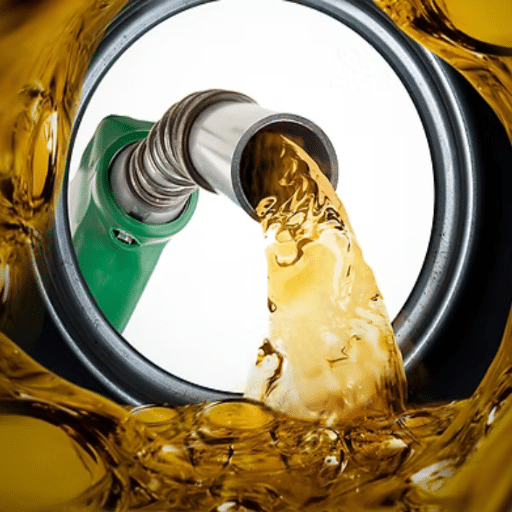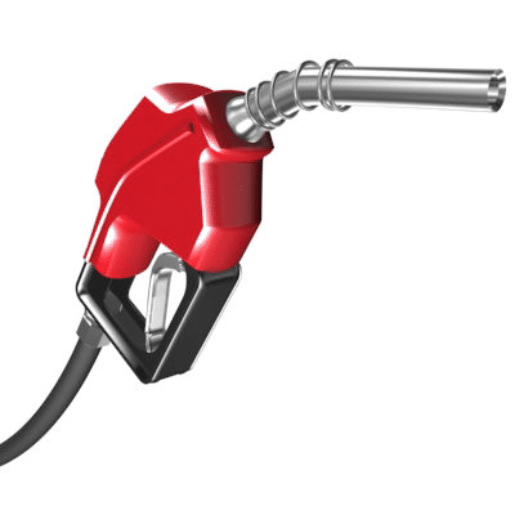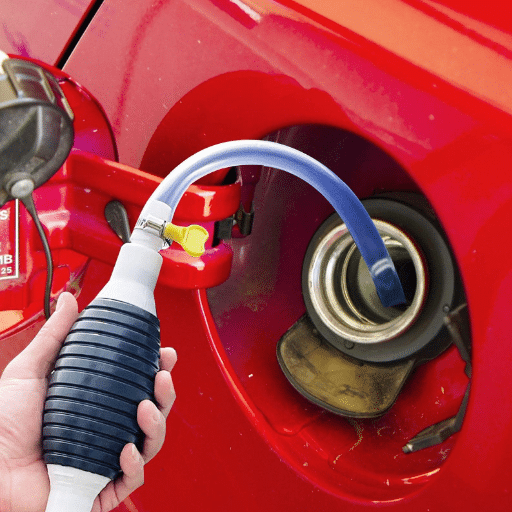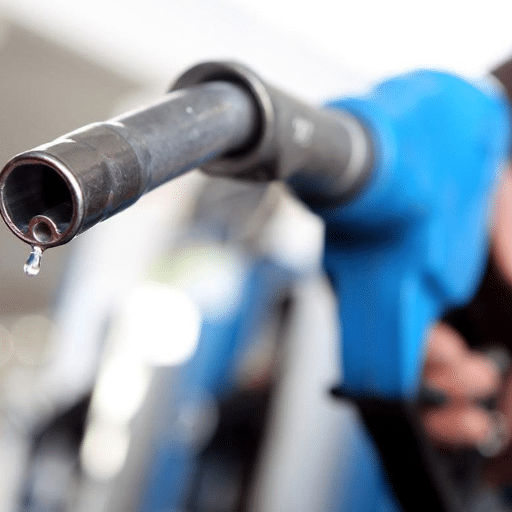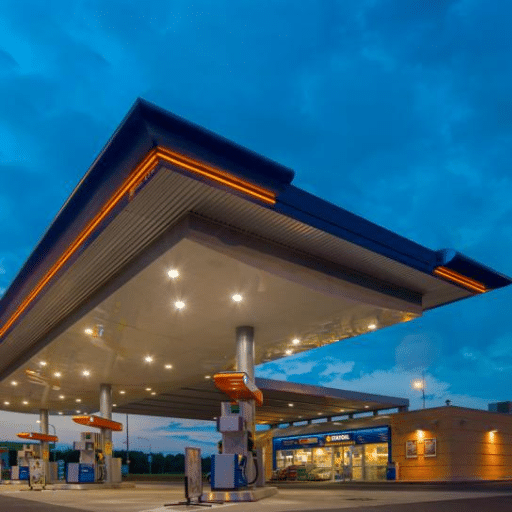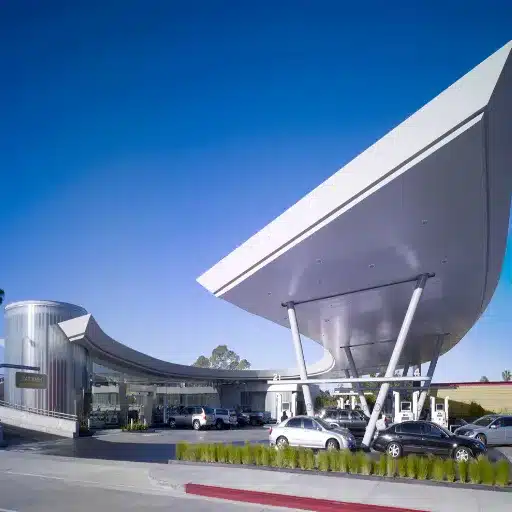Every day, we depend on gas stations for fuel, a quick snack, or a car wash to keep us moving. However, do you know how their business model functions? At first, it might seem to you that there is an easy profit to be made by selling fuel. However, the reality is more multifaceted. With convenience store and car wash sales to diverse revenue streams, razor-thin margins on fuel sales, and a plethora of other lucrative options, the profitability of a gas station depends on many factors that have to come together in the right way. In the following article, we’ll examine the matter in more depth — how gas stations earn money, the obstacles they must overcome, and the main factors for their success. If you want to understand, this analysis will explain the facts gas stations hide about their business.
Overview of Gas Stations
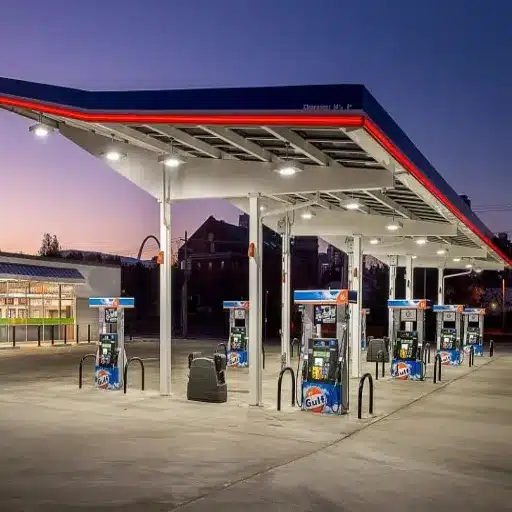
As essential suppliers of motor vehicle fuel, gas stations support drivers and vehicles. Gas stations are made up of fuel pumps, convenience shops, and, in some cases, car washes. Fuel is purchased from wholesalers, and its selling price is a function of global crude prices, regional taxes, and operating expenses. Though fuel sales increase traffic, the profit margin on servicing fuel is low. Many are dependent on their convenience shops for quick snacks and beverages, which contribute a great deal to the profit. This synthesis of fuel and retail business is of great convenience to the customer and aids in running the business.
What is a Gas Station?
A gas station, often called a petrol station or filling station, is a business set up to sell fuels and other services to vehicle owners. The core purpose of a filling station is to dispense fuels like petrol and diesel, and may also include other fuels such as compressed natural gas (CNG), electric vehicle (EV) charging facilities, and hydrogen.
Key Industry Statistics:
- The United States alone boasts more than 150,000 gas stations
- Nearly 80% of gas stations operate alongside convenience stores
- Gas stations in the U.S. make more than $400 billion yearly from combined fuel and retail business
In addition to fuel stations, automobile service centres offer automobile convenience stores, vehicle washes, and even quick-service restaurants. The sales from these convenience stores contribute significantly to the revenue, as gas stations in the U.S. make more than $400 billion yearly from the combined fuel and retail business.
Like fuel stations, automobile service centres are also undergoing technological changes, as a growing number of outlets are accepting payments through mobile devices. Pumps are also becoming automated, and loyalty programmes are being implemented to make the experience better for the customers. In the same way, the growth in the number of electric cars is leading to more EV charging stations, which, in the same way, indicates the changes in the fueling and energy supply in automobiles. Fuel stations continue to serve as the focal points for people to obtain energy for their vehicles, and they serve as the centre for life’s daily dealings while catering to the evolving consumer and energy requirements.
The Role of Gas Station Owners
Gas station proprietors are pivotal stakeholders within the energy and transport industries, overseeing efficient operations and responding to market shifts while ensuring smooth business functions. They oversee daily management, which includes upholding customer service, handling fuel stock, and adhering to safety guidelines.
Key Responsibilities and Opportunities
- Daily Operations Management: Customer service, fuel stock handling, safety guideline adherence
- Electric Vehicle Integration: The global EV charging infrastructure market is projected to surpass $100 billion by 2030
- Technology Implementation: Mobile apps and contactless payments are becoming vital for streamlined services
- Competitive Pricing Strategy: Managing fuel pricing based on crude oil prices and supply chain factors
- Revenue Diversification: Food services, coffee shops, and grocery items can make up a huge percentage of total revenue
Challenges Faced
Owners of gas stations face several hurdles, including issues related to the environment and sustainability. The growing number of regulations concerning emissions and fuel standards necessitates heavy investments in cleaner technology and alternative fuels. Through the adoption of such measures in a proactive manner, owners incur lower costs to comply with regulations; thus, serving the community in a more meaningful way while protecting their brand as a company that implements greener operational practices and is ready to succeed in the distant future.
Different Types of Gas Stations
The types of services and fuel varieties offered define the kind of gas station, serving specific consumer and area needs. Below are some of the most prevalent types of gas stations globally:
Full-Service Stations
These stations are distinguished by their full-service approach, comprising fuel attendants who not only pump fuel but also clean windshields and may perform vehicle checks for vehicle fluids. For the value-added services, these stations charge higher prices. Full-service stations are prevalent in regions that, either based on culture or local statutes, want to prioritize exceptional service to customers.
Self-Service Stations
These gas stations are the self-service type and are the most common in the world. Customers can conveniently and freely fuel their vehicles without assistance. Self-service stations are invariably equipped with numerous fuel pumps to cater to a large number of customers. Due to the low self-service operating expenses, fuel prices are usually lower in such stations.
Hybrid Stations
Unlike self-service and full-service stations, hybrid gas stations provide both self-service and full-service options. Customers may then select how much assistance they would want. Both convenience-seeking and price-shopping customers are catered to, thus increasing the appeal of the model.
Retail Branded Stations
Retail-branded stations are known for their ties with prominent fuel companies such as Shell, Exxon, or BP. Offering a number of fuel-related services, such as loyalty reward schemes or convenience stores and car wash services, these stations also market their advertised branded fuels that come with performance guarantees.
Independent Stations
Independent stations do not have ties to fuel giants. Such stations tend to fill their fuel stocks from other sources, allowing them to offer comparatively lower prices. On the other hand, such stations offer lower-end services and lack the facilities and loyalty programs of branded retailers.
Electric Charging Stations
The emergence of electric vehicles (EVs) has prompted the installation of electric vehicle (EV chargers in many outlets. Some are dedicated EV charging stations, while others have electric chargers along with conventional fuel pumps. There were more than 140,000 public EV charging ports in the US alone in 2023.
Alternative Fuel Stations
The use of compressed natural gas (CNG), hydrogen, ethanol blends, or biodiesel as a fuel has become more common, and appropriate fuel stations are growing. Supporting eco-friendly businesses and customers is the objective of these fuel stations. For example, the fueling stations using hydrogen are growing the most in areas like California, Japan, and parts of Europe to facilitate the use of hydrogen vehicles.
Gas Station Revenue Streams

Consider the average gas station. Now imagine its revenue streams: fuel, a small convenience store, and maybe a lottery ticket stand. Fuel will be the big earner, with gas and diesel attracting commuters and local traffic. Imagine the snacks, cold drinks, and chips in the small store. The convenience shop will do well, in part because such items are a lot easier to markup than fuel. Revenue is further aided by the car wash, the air pump, and even the lottery machine. There may even be a small income on the side through a fast-food chain outlet or a small ATM.
Fuel Sales and Pricing
The sales of fuel still dominate gas stations’ income and profit. However, the profit is still dependent on the current oil price, demand, and the level of competition in the region. The prices of fuel include the cost of crude oil, refining, distribution, taxes, and the retailer’s small percentage.
Fuel Profit Reality: Reports suggest that the gasoline markup stands at $0.15 per gallon, but a large percentage of this goes toward operational costs such as employee salaries, maintenance, and utilities.
Fuel demand fluctuates with the seasons, and it is generally higher during the summer months due to increased travel. It is estimated that the peak U.S. gasoline consumption periods exceed 9 million barrels per day, revealing the importance of fuel to the economy. Moreover, gas stations need to price fuel in consideration of other sudden events like a terrorist attack, a hurricane, or an earthquake that might cause a sudden increase or decrease in crude oil prices.
Convenience Store Sales
Convenience stores are a major factor in the gross income of gas stations because they provide daily items that people need. Beverages, snacks, and even pre-packed meals are some of the most in-demand foods that are bought by consumers. The consumer movement to purchase faster meals on the go has caused a rise in demand for ready-to-order to order sandwiches, salads, and coffee, which is in marked increase.
Convenience Store Impact: More than $250 billion in annual revenue is linked to convenience stores in the U.S., with each consumer spending an average of 3 to 4 minutes in a store. Impulse buys, especially in candy and energy drinks, are a major contributor to revenue.
To better serve the needs of their customers, some convenience stores are changing what they sell, including healthier foods and other eco-friendly products. By means of loyalty cards and special discounts, repeat purchases are stimulated, and a stronger customer base is cultivated.
Additional Services Offered
Nowadays, the needs of consumers revolve around time and convenience. Keeping this in mind, convenience stores and gas stations are providing new services:
- Quick-service dining options
- Car washes
- Electric vehicle (EV) charging – The global EV charging market is projected to surpass $61 billion by 2030
- Package delivery and pickup stations – Direct result of the boom in e-commerce
- Financial services – ATMs, money transfers, and bill payment kiosks
Profit Margins for Gas Stations
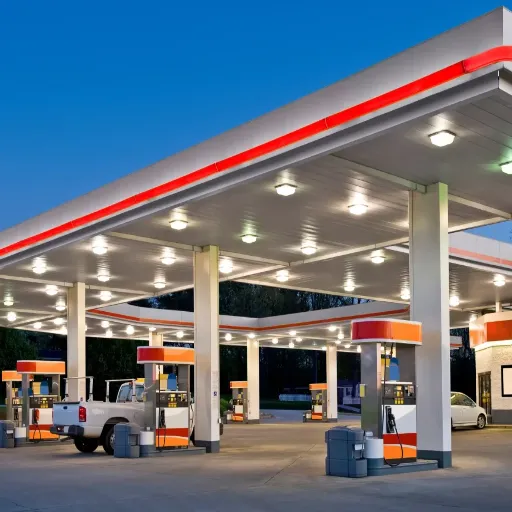
| Revenue Stream | Profit Margin | Notes |
|---|---|---|
| Fuel Sales | 5% – 10% | Very thin margins, typically $0.10-$0.15 per gallon |
| Convenience Store Items | 30% – 50% | High-margin products like snacks, beverages, tobacco |
| Car Washes | 70%+ | Extremely profitable service offering |
| Other Services | Varies | ATM fees, lottery commissions, etc. |
Understanding Profit Margins
Multiple factors govern the profitability of the retail fuel sector. While gasoline and diesel fuel sales are the primary revenue drivers of fuel stations, the profit margins on fuel sales are thin, typically ranging from 5 to 10 cents per gallon after deductions for transport, credit card fees, and regulatory fees.
Filling station convenience stores play a crucial role in profitability. The sale of snacks, drinks, coffee, and tobacco products not only generates revenue but also brings in a healthy profit margin of 30 per cent to 50 per cent. Additional offerings such as car washes and car wash hygiene services, lottery ticket sales, and even cash withdrawals from ATMs add to the income.
Factors Affecting Profitability
1. Fuel Price Changes
Fuel price changes because of crude oil price changes and geopolitical issues are among the major driving forces of fuel price changes. In the case of 2023, global oil prices changed because of increased demand in economies that are recovering from pandemic. Margin maintenance is important, and for that, gas station operators must monitor the trends and change pricing accordingly.
2. Consumer Behaviour
The shift in the landscape as a result of consumer preferences is the rising use of electric vehicles. According to recent data, the sales of EVs have been increasing at a CAGR of more than 30%, with an expectation of having millions of electric vehicles on the streets by the year 2030.
3. Alternative Revenue Streams
Convenience store and food service sales have become important to increasing profits. Convenience store sales in the US have been reported to have an approximate revenue of $700 billion in the last fiscal year.
4. Regulations and Environmental Policies
Increasing government focus on carbon reduction is the basis for the increased regulations on fuel sales and the transport sectors. The use of biofuels, emission compliance penalties, and incentives for sustainable practices affect operational costs and business strategies.
5. Technological Advancements
The use of technology, such as automated payment systems and real-time inventory tracking, allows gas stations to optimize and improve their processes. Moreover, the use of digital loyalty programs and mobile app integrations can improve the client experience and increase repeat patronage.
How Much Do Gas Stations Make on Fuel Sales?
Reality Check: The gas station’s fuel income actually has a very slim margin of profit. Fuel stations usually make about $0.10-$0.15 per gallon, but that is only after all other expenses, such as employee wages, utilities, and credit card fees, have been paid. This profit margin constitutes only about 2% of the price the consumer pays for fuel.
Most of the income from fuel sales is used to pay the fuel’s wholesale price, along with taxes and other refinery fees. The fuel price is set by a mixture of factors such as the crude price, refinery issues, and regulations specific to a particular region. When the crude prices rise or fall, fuel stations adjust their fuel prices to maintain competitiveness, but this has little to no effect on the bottom line since the profit margin is nearly fixed.
Ancillary services such as car washes and convenience store sales make a lot more profit as compared to fuel, so most fuel stations tend to rely on such services to make more profits. Understanding these factors draws attention to the challenges that fuel station operators encounter in finding various sources of revenue to sustain profitability amid fierce competition.
Financial Aspects of Operating a Gas Station
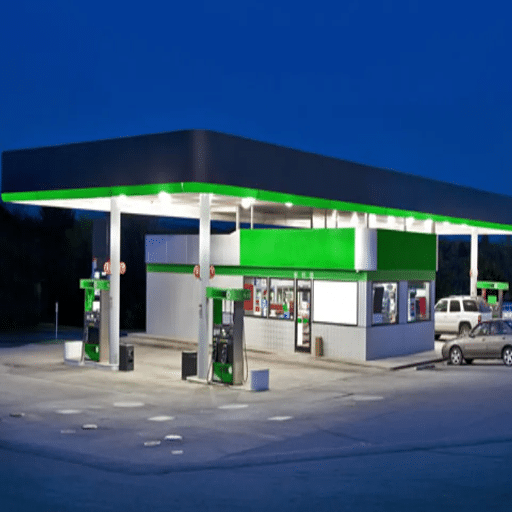
Fuel Sales and Other Income
A petrol station operator must keep track of a number of different income sources to keep their business afloat. While most of the revenue comes from the fuel sales, the margins are usually thin due to the intense competition and ever-changing prices of oil. To profit more, high-margin services such as coffee and beverage selling, car washes, and convenience stores are focused on by many petrol stations.
Issues and Expenses
There are a number of both fixed and variable expenses that come with the financial management of a petrol station. Some of these include employee payments, fuel and electricity purchases, as well as maintenance and upkeep. The petrol station operators are also subject to other issues such as changes in market regulations, shifts in market demand and consumer behaviour, as well as their impact on profits.
Definition of Essential Diversity
Attempting to sustain the business over a longer period of time requires attempting to increase the sources of income. Stations that can successfully operate tend to create other channels of income not related to fuel, which helps serve the clientele and also respond to changes in the market.
Initial Investment and Startup Costs
By region, size, and services offered, the financial commitment towards starting a gas station is substantial.
| Cost Category | Amount Range | Details |
|---|---|---|
| Total Initial Investment | $250,000 – $2,000,000 | Varies by location, size, and services |
| Franchise Fees | $30,000 – $50,000 | For major oil company franchises |
| Annual Insurance | $5,000 – $35,000 | Liability and property coverage |
| Employee Wages | $10 – $15/hour | Varies by regional labor laws |
| Construction Costs | $400,000+ | For modern facilities with advanced systems |
Important initial costs include acquiring or leasing land, constructing buildings, purchasing fuel pumps and tanks, and securing licenses and permits. Stocking fuel and convenience store products can also add tens of thousands to the initial costs.
Established brands are an option, but they come with their own set of fees. For example, a big oil franchise can charge an initial fee ranging from $30,000 to $50,000. On top of that, they will charge ongoing royalties based on sales. Independents might charge less for branding fees, but they come with greater marketing and operational burdens.
Operational Costs and Expenses
The operation of a gas station involves many day-to-day expenses that can put a dent in profits:
Major Operational Expenses
- Fuel Supply: The largest day-to-day expense, with volatile prices due to the global oil market
- Employee Wages: Range between $9-$15 per hour depending on the region
- Utilities: Water, electricity, and gas can range from $2,000-$5,000 monthly
- Maintenance: Car wash and air compressor services, structural maintenance can cost thousands
- Insurance: Liability and property insurance, usually $5,000-$15,000 annually
- Credit Card Processing Fees: Between 1.5%-3% of gross sales
With structural maintenance of ease, these losses can fetch in the thousands, especially when servicing old equipment. Credit card processing fees further reduce profits and add to the list of myriad expenses, underscoring the need for a carefully balanced budget and well-thought-out operational choices.
How Much Does a Gas Station Owner Make?
Average Annual Earnings: For the United States, gas station proprietors earn an average of $40,000 to $100,000 a year. However, this figure is greatly impacted by location, size, fuel sales volume, and additional revenue sources.
Factors Affecting Owner Income
- Fuel Profit Margins: Gas stations earn a paltry 3 to 7 cents per gallon on average after operating costs
- Non-Fuel Sales: Snacks, drinks, and automotive items tend to sell at much higher and more profitable margins
- Location Impact: Urban high-traffic areas or highway locations generate more customers and revenue
- Additional Services: Prepared food and automated car washes add significant revenue to annual profit margins
Even though operating a gas station has high startup and operational costs, the success is in optimising the pricing strategy, controlling costs, and having multiple revenue streams. The proprietors who master these have a great opportunity to make the business very lucrative.
Strategies for Increasing Profitability
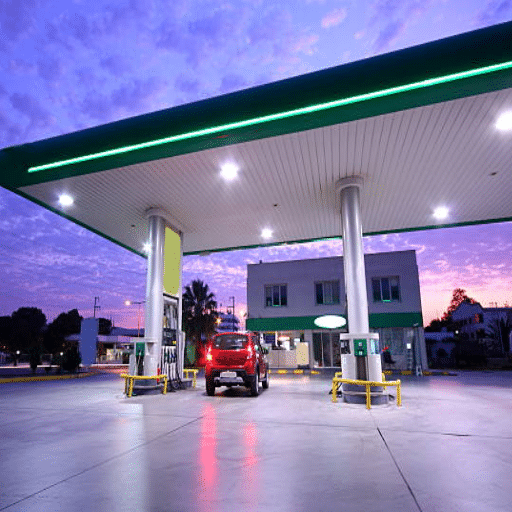
1. Extend Your Product and Service Range
Add small retail items, hot food, and even services like car washes or air pumps to create new income streams.
2. Refine Your Pricing Models
Keep an eye on the fuel prices nearby, and use smart pricing to draw more customers without sacrificing profits.
3. Cut Down On Operational Expenses
Adopt new energy-saving gear, like LED lights and new-generation fuel pumps, to trim utility bills and boost margins.
4. Spend on Employee Development
Trained staff improve the standard of customer support, thereby enhancing the chances of customer retention and return.
5. Make Use of Marketing and Promotions
Loyalty schemes, marked-down prices, and community-directed publicity aid in drawing and keeping clientele.
These steps will contribute to the steady growth of your profit margins as well as the continual success of your business.
Enhancing Customer Experience
Enhancements to the customer experience enables a further increase in the already existing satisfaction and in bringing forth further loyalty. In order to enable such improvements, the businesses need to gain an understanding of the customer needs, which can be enabled through feedback and surveys and thus be facilitated further services.
Key Customer Experience Strategies
- Speedy, Friendly Service: Positive impressions through helpful and efficient service
- Technology Integration: Self-checkout kiosks and mobile payment options expedite transactions
- Consistent Communication: Trust building through reliable issue resolution
- Personalized Offers: Reward programs and tailored deals nurture customer relationships
- Brand Consistency: Unified messaging across all customer touchpoints
Trust needs to be improved through the use of consistent communications and issue resolution. Furthermore, the use of technology such as self-checkout kiosks and mobile payment options not only expedites the transaction process but also increases the appeal to a certain class of customers.
Marketing and Promotions
Addressing the question in brief, I concentrate on providing coherent, unambiguous communication and cultivating trust among our customers. I seek to make purchases easier and more engaging by using technology like self-checkout kiosks and personalized deals. Moreover, I emphasize loyalty programs and focused campaigns to sustain loyalty and optimize the results of our marketing initiatives.
Implementing Excellent Customer Service
Excellent customer service hinges on the needs and expectations of one’s customers. To begin with, one must train the staff to exhibit empathy, take initiative, and communicate well to foster a positive environment.
Customer Service Best Practices
- Staff Training: Empathy, initiative, and effective communication skills
- Process Simplification: Streamlined procedures for faster service
- Quick Response: Swift answers to customer questions and concerns
- Tailored Solutions: Personalized approaches to customer needs
- Feedback Systems: Tools to identify improvement areas
- Technology Support: Live chat, AI-powered service, and knowledge bases
A company’s commitment to its customers is shown when it simplifies procedures, answers questions swiftly, and provides tailored solutions. Technology such as live chat, AI-powered customer service, and knowledge bases can also improve the efficiency and ease of dealing with a company as well as the resolution of problems. Trust and loyalty can be developed through strong relationships, and the company’s intent in the end is to nurture these relationships by consistently going beyond what is expected.
Reference Sources
“The Effect of Facilities and Service Quality on Customer Satisfaction of Gas Station”
Frequently Asked Questions (FAQs)
How Do Gas Stations Generate Income?
Gas stations generate income primarily through the sale of fuel. Other important sources of revenue include the convenience store, car wash, and even small services like oil changes. These sources combined have a significant effect on the overall profitability of the gas station.
What Is the Profit Margin Like for Gas Station Owners?
As with any business, gas station owners’ profit margins can depend on a range of factors, including fuel prices, the location of the gas station, and other services provided. While the fuel sales margins are pretty thin, usually between 10 and 15 cents a gallon, convenience store sales have a far better profit margin, which can be well over 40%.
How Much Does a Gas Station Owner Earn?
Gas station owners’ income depends largely on fuel sales as well as the sales performance of the convenience store. A gas station owner typically earns a net profit in the range of $50,000 to $100,000 annually, relying heavily on the efficiency of the fuel sales as well as additional services that the station may offer.
What Are the Main Factors That Affect Gas Station Revenue?
Fuel prices, local competition, and the range of services and products offered are the critical factors that affect gas station revenue. Good inventory management and good customer service are also very important in bringing in lots of fuel and non-fuel sales, as well as in driving traffic to the station.
What Revenue Streams Do Gas Stations Have?
Gas stations have multiple revenue streams, including fuel sales, convenience store sales, car washes, lottery ticket sales, and additional services such as oil changes. Gas stations need to diversify revenue streams if they are to be profitable.
What’s The Impact Of Fuel Prices On Gas Station Profitability?
When fuel prices are high, gas stations tend to have lower profit margins, unless they have the exclusivity to set fuel prices in line with market dynamics. On the other hand, lower fuel prices tend to increase sales volume, although the margins on fuel tend to be lower.
What Additional Gas Station Services Help Increase Profit?
Car wash, auto repair, and food and beverage services help increase the profits of gas stations. High-margin services not only provide additional revenues but are also beneficial in increasing the foot traffic and loyalty of customers to the gas stations.
How To Enhance Customer Loyalty At Gas Stations?
Fuel discounts, convenient store layout, and excellent customer service directly benefit the gas stations by enhancing customer loyalty. The use of discount fuel programs, convenience store loyalty programs, and the provision of convenience items also serve as incentives for customers to come back, thereby increasing revenue.

